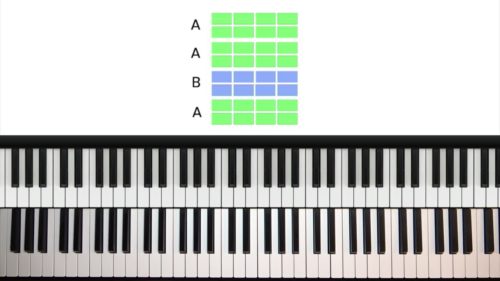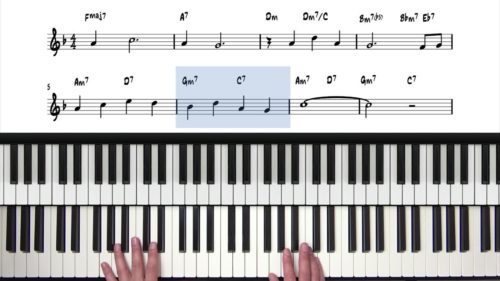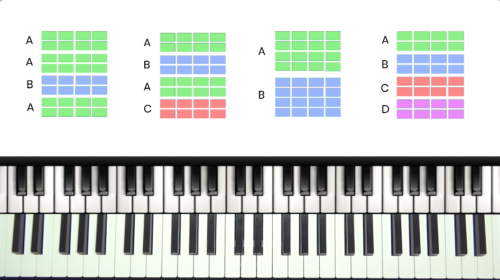“Misty” – Form & Performance Guidance
Welcome to the 3rd lesson in our beginner exploration of the tune “Misty.” In this lesson, we will work through the entire song – which is 32 bars long – and discuss how to choose the most suitable voicings and melodic embellishments.
Once you are comfortable with the basic arrangement, check out the dedicated course on this tune “Misty – Cocktail Piano Improvisation”. This is a mixed-level course which teaches more sophisticated harmony, arranging techniques, and improvisation principles.
Understanding the Form & Sections
The 1st 8 bars can be viewed as the 1st A section. The 2nd A section spans from bar 9 to bar 16 and is almost identical to the 1st A section, except for a slightly different ending which is used to lead into the B section.
The B section constitutes bars 17 to 24 and stands out with its distinct melody and harmony. Finally, the 3rd A section, or final A section, covers bars 25 to 32 and is used to bring the song to its conclusion by revisiting the original theme and finishing with a resoltion to the Eb major – the ‘tonic’ or ‘home base’.
Playing From Memory
The A sections represent 75% of the tune with only very minor variations to distinguish each section. By internalising the similarities and differences in each section of the tune, you can play from memory with more confidence and fluidity.
Putting It All Together
After discussing each section individually, we play through the entire song focusing on smooth transitions and maintaining a steady pulse.
Make a conscious effort to always be aware of your position in the form and this will help you to internalise the structure of the tune and play from memory.
Practice Tips
-
Visualise the Form: Remember that "Misty" follows an AABA structure. Visualizing this can help you navigate the song more easily as there is a lot of repetition in the harmony and melody.
-
Focus on Transitions: Pay special attention to the transitions between sections, especially from the second A section to the B section. The Db7 chord is a clean and simple way to navigate this transition.
-
Practice Variations: Experiment with slight variations in the repeated A sections to keep your performance interesting. Melodic embellishments such as turns, grace notes, and additional melody notes can make a performance sound more unique and original.







Hayden, this type of presentation where we not only get to peek over your shoulder as you play but also tap into your thought process is extremely useful and effective in eventually leading us, the students, to come up with our own favorite voicings. Really looking forward to the Aug, 28 live seminar
Hi Humberto 👋
Thanks for the comment. I included a similar lesson for the final lesson in the “Over The Rainbow” module which has just been added to this course.
I will be sure to create a lesson like this for each of the Novice jazz standard studies – where I explain my thought process when playing through the tune. I agree it’s useful for students to not only see the voicings but also understand the thought process behind them.
and yes, I will also expand upon this in my seminar on the 28th.
Talk soon,
Hayden